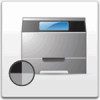Lexmark Monochrome Laser Complete Printer Reference (1.7 MB) - Page 41
Finishing Menu continued, Long Edge, Short Edge
 |
View all Lexmark Monochrome Laser manuals
Add to My Manuals
Save this manual to your list of manuals |
Page 41 highlights
Finishing Menu (continued) Menu item Duplex Bind Note: Duplex Bind is only displayed when a duplex option is installed. Copies Blank Pages Collation * Factory default Printer setting = Long Edge* = Short Edge Duplex Bind refers to the way duplexed pages are bound, or connected, and how the printing on the back (even-numbered) pages is oriented in relation to the printing on the front (odd-numbered) pages. Long Edge means pages are bound along the long edge of the page (left edge for portrait and top edge for landscape). Short Edge means the pages are bound along the short edge. See "Binding duplexed jobs" on page 113 for more information. = 1...999 (1*) Choose the number of copies you want to print. Copies are not automatically collated. For example, if you send three pages to print and set Copies to 2, the printer prints page 1, page 1, page 2, page 2, page 3, page 3. For information about how to use the Copies setting with the Collation setting, see "Collating print jobs" on page 111. = Do Not Print* = Print Select Print to include application-generated blank pages with your print job. Select Do Not Print if you do not want to print any application-generated blank pages appearing in your document. = Off* = On When Collation is set to Off, the printer prints each page of a job the number of times as specified by the Copies setting. For example, if you send three pages to print and set Copies to 2, the printer prints page 1, page 1, page 2, page 2, page 3, page 3. When Collation is set to On, the printer prints the entire job the number of times as specified by the Copies setting. For example, if you send three pages to print and set Copies to 2, the printer prints page 1, page 2, page 3, page 1, page 2, page 3. For more information about collation, see "Collating print jobs" on page 111. Changing printer settings 41















